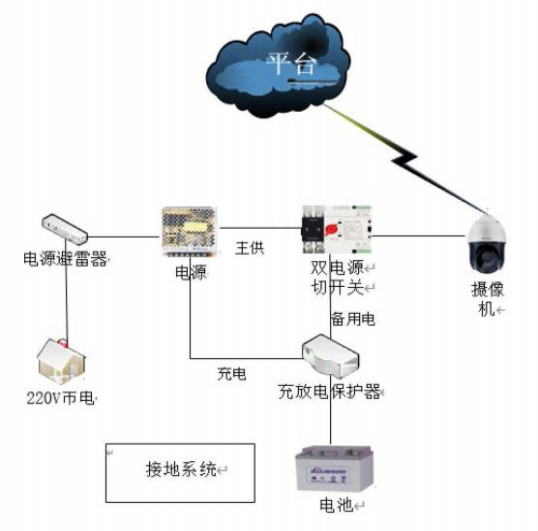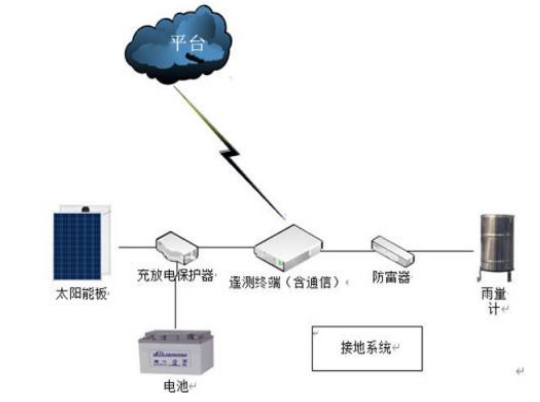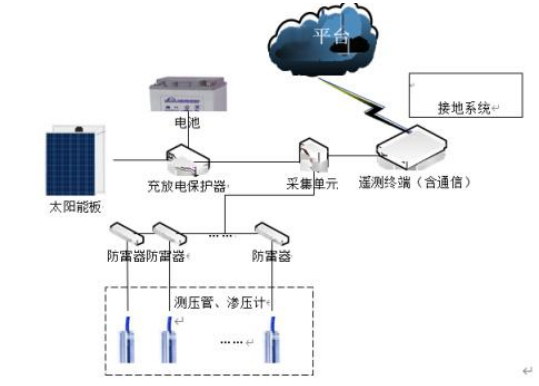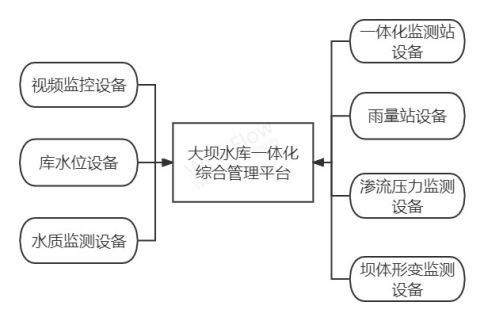As an important water conservancy infrastructure, reservoir dams play a vital role in water resource allocation, fire prevention and disaster reduction. As my country's economic development increases the demand for water resources, its role will become more and more obvious. While reservoir dams play an important role, the risk of dam failure and flooding caused by their own safety will also bring potential safety hazards to relevant areas; although the probability of accidents is very low, the consequences of accidents are serious. Catastrophic damage that can cause huge loss of life, property and the environment. According to statistics, in the 50 years from 1954 to 2003, there were 3,481 dam failure accidents in my country, including 2 large-scale reservoirs, 123 medium-sized reservoirs, and 3,356 small-scale reservoirs. , accounting for 96.4%.
Many reservoirs were built from the 1950s to the 1970s, and most of them were carried out in the process of “surveying, designing, and constructing”. The engineering standards were low, the construction quality was poor, the dam safety monitoring facilities were missing, and the dam safety monitoring work was carried out. Incomplete or even blank, there are certain security risks.
According to the "Administrative Measures for the Construction and Operation of Small Reservoirs Rainwater Forecast and Dam Safety Monitoring Facilities" (Shuiyunguan [2021] No. 313), "Notice on Accelerating the Construction of Small Reservoir Rainwater Forecast and Dam Safety Monitoring Facilities" (Shuiyunguan [2021] No. 313) Guanhan [2021] No. 12); and the requirements of "Hydrological Monitoring Data Communication Protocol" SL651-2014, speed up the construction of reservoir rainwater forecasting and dam safety monitoring facilities, strengthen reservoir operation management and protection, and improve the level of reservoir information and intelligent management . Adhere to the principle of "economical, stable, reliable and practical, and advanced technology", make full use of modern sensing technology, measurement and control technology, public network communication technology and computer network technology, and build a rainwater situation based on information collection and supported by an information network platform. And the automatic monitoring and reporting system of reservoir safety monitoring, realizes the automatic collection and early warning and forecasting functions of reservoir rainwater conditions and reservoir safety information, creates conditions for improving the level of information management of reservoirs, and provides data support for the safe operation of reservoirs and rational utilization of water resources.
I.Video monitoring
Layout principle: Small reservoirs with communication conditions such as wired Internet or mobile Internet should be equipped with video surveillance equipment, and network cameras should be used for video image acquisition and transmission, and on-site monitoring and remote monitoring of dams, spillways and other on-site conditions.
Frame structure: Main equipment of mains access video station: network dome, memory card, communication card, switching power supply, power supply, lightning protection and grounding, etc. The structure diagram is as follows:

The main equipment of the video station without mains access: low-power cameras, memory cards, batteries, solar panels, communication cards, lightning protection grounding, etc. The structure diagram is as follows:

Technical implementation: local video storage and access to provincial and municipal platforms through standard protocols. Remote monitoring has real-time video viewing and picture timing push functions. Video images can be integrated with information such as precipitation, reservoir water level, seepage flow, and seepage pressure through on-site equipment or monitoring platforms.
Data transmission can choose wired transmission, wireless public network and wireless bridge. In the case of network conditions, it is advisable to use wired or bridge communication to ensure real-time viewing of video data. Consider transmission through wireless public network under unconditional conditions. Video and calculate the size of the traffic selection as required.
II. Rainfall forecast
1、Precipitation monitoring
Layout principle: Precipitation monitoring should be carried out for small reservoirs, and at least one precipitation monitoring point should be set up. The monitoring points that can increase the precipitation with a watershed area exceeding 20km² should be representative of the watershed.
Precipitation monitoring points should be set in flat and open places, generally on dams, and should avoid strong wind areas, avoid power lines, and avoid the shading effect of topographic trees, trees and buildings.
The main equipment for rainfall monitoring includes: data acquisition terminal, rain gauge, communication module, power supply system, lightning protection system, etc. The structure diagram is as follows:

2、Reservoir water level monitoring
The principle of measuring points layout: the reservoir water level monitoring point should be able to represent the stable water level in front of the dam, and should be set on the upstream dam slope dam surface, the stable bank slope or other permanent buildings, and meet the requirements of stable water surface, little influence of wind and waves or discharge, and easy access. Installation and observation requirements.
At present, the automatic water level measurement and reporting instruments mainly include float water level gauge, ultrasonic water level gauge, radar water level gauge, bubble water level gauge, pressure water level gauge, video water level gauge, etc.
III.Dam safety monitoring
1、Seepage monitoring
The cross-section of seepage pressure monitoring is set according to the project scale, dam type, dam height, downstream influence, etc. The requirements are as follows:
1) For small (1) type reservoir dams, 1~2 monitoring cross-sections should be set, generally set at the maximum dam height and the pair of hidden seepage dam sections. If the dam length exceeds 500m, the monitoring cross-sections should be added as needed;
2) For small (2) reservoirs with a dam height of more than 15m, one monitoring cross-section should be set up, and for those with a dam height of less than 15m, a monitoring cross-section should be set up as required.
The seepage pressure should be monitored by installing a piezometer in the pressure measuring pipe. The setting requirements of the measuring points are as follows:
1) Generally, 1~2 monitoring points are set for each monitoring cross section;
2) The monitoring points of homogeneous dam, core wall dam and inclined wall dam in earth-rock dams are generally set on the downstream side of the dam crest or the downstream side of the core (oblique) wall, the dam toe or the front edge of the drainage body. If necessary, an additional 1 monitoring points;
3) Uplift pressure monitoring points are set up for concrete dams and masonry dams according to corridors, curtains and seepage conditions;
4) If the face rockfill dam needs to be set up, it should be determined according to the situation;
5) The downstream water level or groundwater level monitoring points near the dam are set as required.
6) If there is obvious leakage around the dam, set up the seepage flow or seepage pressure monitoring points around the dam as needed.
Framework
The main equipment and facilities of osmotic pressure monitoring (wired) include: piezometer, pressure measuring tube, acquisition unit, power supply system, lightning protection grounding, lead wire and other parts. The structure diagram is as follows:

2、Deformation observation
Layout principle:
1) For earth-rock dams with a dam height of more than 30m or a large downstream impact, or concrete dams and stone-masonry dams with a dam height of more than 50m or a large downstream impact, surface deformation monitoring facilities should be installed. For other small reservoirs, the dam deformation monitoring facilities shall be set up according to the requirements of the specification and in combination with the actual project.
2) The surface vertical displacement monitoring is mainly used for earth-rock dams, and the surface horizontal displacement monitoring is mainly used for concrete dams and masonry dams.
3) The deformation monitoring section should be set according to the dam type and height. It is advisable to set a deformation monitoring longitudinal section on the downstream side of the dam crest, and an additional monitoring cross section may be set up for earth-rock dams if necessary.
Following the above principles, the construction task of the Dalian Dam Safety Deformation Observation Station needs to be determined after detailed investigation.
Technical realization:
Through satellite positioning, 3-5 observation points are set for the small type 1, and 2-3 observation points are set for the small type 2, of which 1 reference measurement point should be located in the area outside the influence of the project, and should be arranged on both sides of the strait with good conditions and stable foundations. , a location that can be stored for a long time. The monitoring data of the observation point is transmitted to the background model to calculate the deformation curve.
IV.System integration
The on-site monitoring data is uploaded to the provincial platform through 4G/3G communication or satellite communication using public information services. The requirements of the facility construction project can be displayed by using a web browser, without the need to install additional software.
Frequency of data collection: Precipitation and reservoir water level are automatically measured and reported once an hour. When there is heavy precipitation, significant changes in reservoir water level, or special circumstances such as major floods, strong earthquakes, and engineering anomalies, the frequency of monitoring and reporting should be increased (including Beidou Communication). In the case of failure or interruption of the main channel, the rainfall and water level data are uploaded according to the transmission frequency of the main channel); the monitoring frequency of seepage flow and seepage pressure is automatically collected once a day, and during the initial storage period or encounters major floods, strong earthquakes, and industrial anomalies, etc. In special circumstances, the monitoring frequency should be increased; the dam deformation monitoring frequency and data should be monitored at least once per month according to the requirements of the Design Specification for Safety Monitoring of Water Conservancy and Hydropower Projects (SL725-2016). Data analysis and on-site equipment installation and debugging adjust the monitoring frequency to no less than 1 time per week, and increase the monitoring frequency during the initial storage period or in special circumstances such as major floods, strong earthquakes, and engineering anomalies.
According to the overall and sub-item design of the system, the project is divided into three types of data: rainwater condition data, dam safety monitoring data, and video data. After the rainwater condition data has been built in the provincial center and has a standard transmission protocol, it is directly stored in the standard protocol. To share data, dam safety monitoring data needs to establish a standard transmission format, unified coding, unified storage, and then shared to various cities; video data is stored locally and viewed remotely, and the data is forwarded from the provincial central platform to lower-level users for sharing and viewing.
